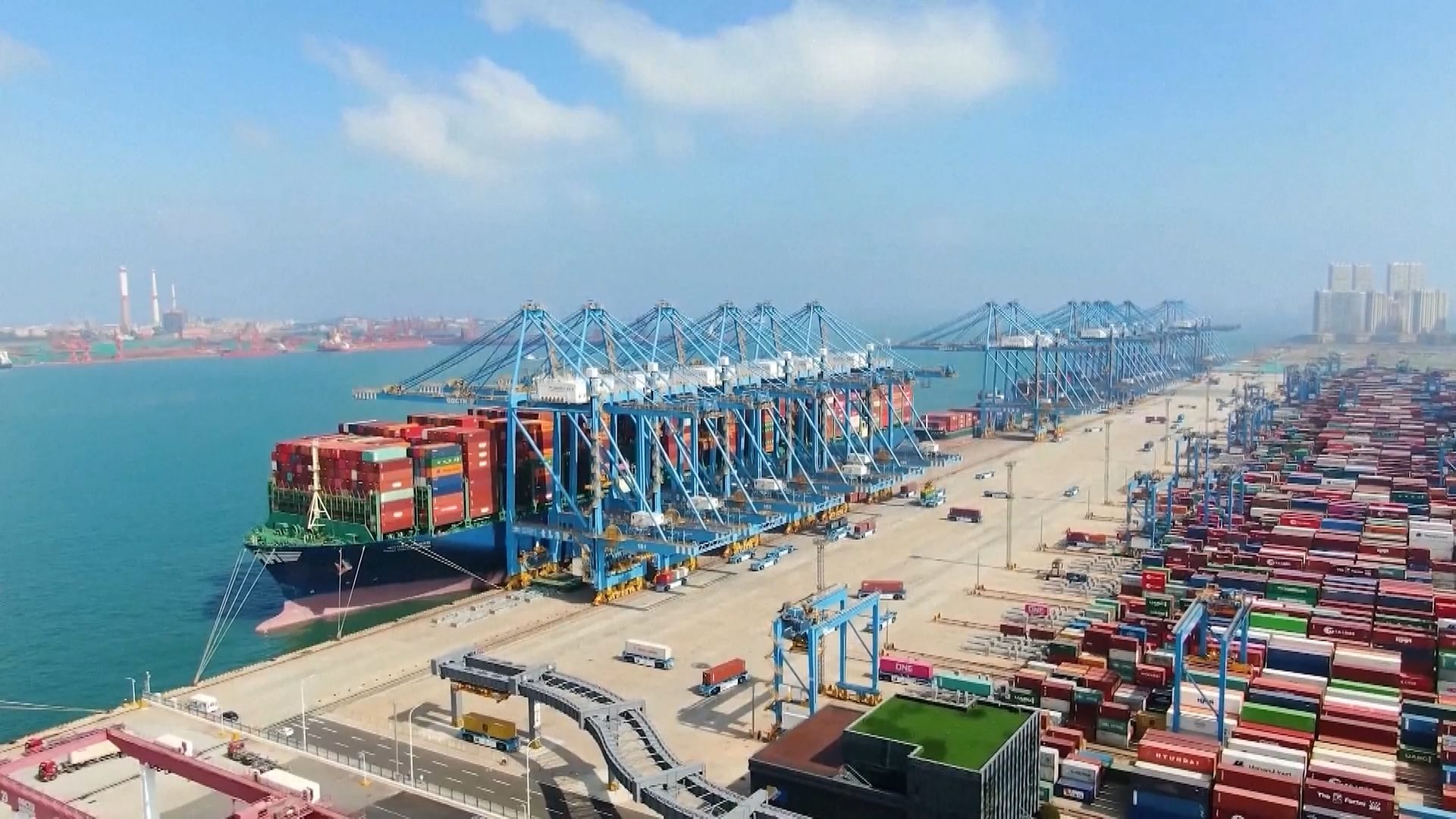RCEP Offers Enticing Opportunities in 2023

Qingdao Port of Shandong province has opened three routes under the Belt and Road Initiative and RCEP since 2021. The photo shows one of the container terminal in Qingdao Port. (PHOTO: VCG)
Edited by QI Liming
Considered one of the world's largest regional free trade agreements, the Regional Comprehensive Economic Partnership (RCEP) has attracted much attention since it took effect a year ago.
According to the World Bank, RCEP covers 2.3 billion people or 30 percent of the world's population, and contributes about 25.8 trillion USD to global GDP per annum.
Bridging gaps to extend beyond economic cooperation
According to the East Asia Forum, RCEP benefits extend beyond economic cooperation. The agreement epitomizes how its 15 participating countries with stark political, economic and social differences have managed to work together during seven years of negotiations before RCEP was set up.
Iman Pambagyo, the former chairman of the RCEP Trade Negotiation Committee, said that in a time of great uncertainty, the RCEP Agreement provides an opportunity to contain potential conflicts and focus instead on common goals to elevate the economic, political and social welfare of RCEP's citizens.
Former Indonesian Foreign Minister Marty Natalegawa used a new term, "dynamic equilibrium," to describe the agreement, which allows flexibility without compromising commitments and provides room for cooperation to narrow gaps that remain as the agreement was implemented. The effects of RCEP are impressive as it incentivizes supply chains across the region.
RCEP and BRI both benefit rapid regional growth
The RCEP and the Belt and Road Initiative (BRI) are contributors to regional and global economic recovery efforts, academics speaking in the 17th annual international conference of the Institute of China Studies at the Royal Academy of Cambodia.
The remarks were made by senior economist Ky Sereyvath, director-general of the Institute. "The RCEP regional trade deal has helped create new business and employment opportunities, strengthen supply chains in the region, and promote the participation of micro, small and medium enterprises in the regional value chains and production hubs," he said.
Joseph Matthews, a senior professor at the BELTEI International University in Phnom Penh, said the BRI has played a crucial role in helping countries cushion the economic fallout. "The BRI will become the new engine of global economic growth," he said, adding that, "It will continue to boost regional and global cooperation in terms of hard and soft infrastructures, economy, trade, investment opportunities, cultural exchange, and people-to-people connectivity."
Foreseeable future of RCEP
According to S&P Global Market Intelligence, from a global trade perspective, the importance of the RCEP will grow. RCEP's share of global exports is forecast at 34 percent in 2040, three times the Canada-United States Free Trade Agreement (CUSFTA) and twice the Comprehensive and Progressive Agreement for Trans-Pacific Partnership (CPTPP).
To better illustrate the importance of the RCEP agreement, a gravity model was used to analyze the development of trade. The conducted research proves that the country size and distance matter. Countries with higher GDP or with a larger population usually have more trade, and in addition, trade intensity is also related to the geographical distance, because the further exports of goods are, the higher the transport costs and the larger the carbon footprint left behind.
The integration of supply chains within the region will be favored due to the fact that the system connects economies at very different levels of development, which will result in the transfer of labor-intensive production to less developed countries in Southeast Asia. At the same time, production and services related to advanced technologies will be concentrated in Japan, South Korea and China, thus boosting comprehensive development in a sound way.


